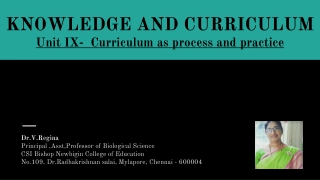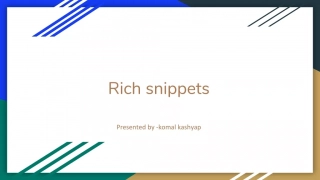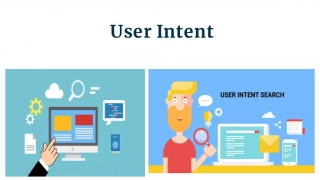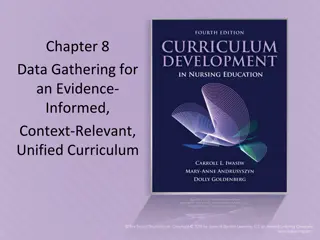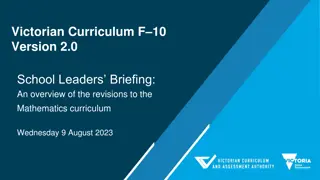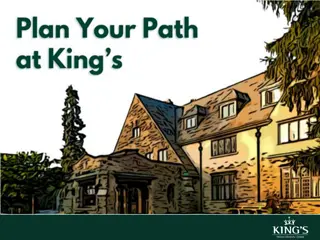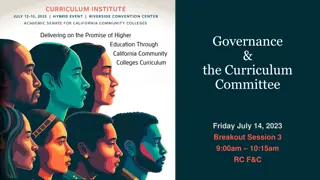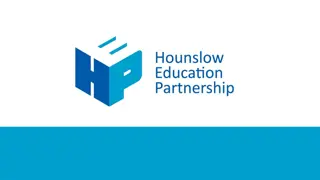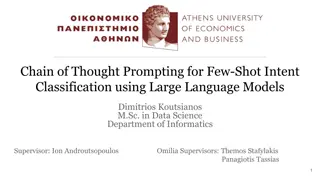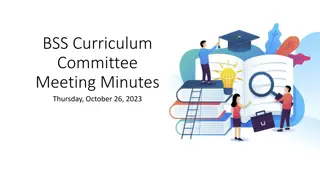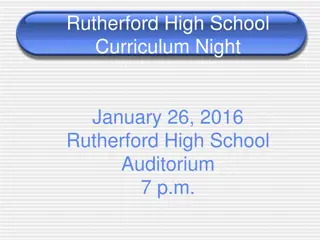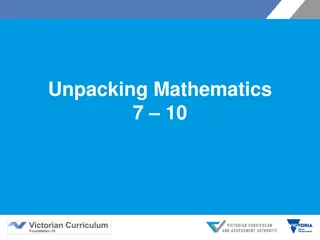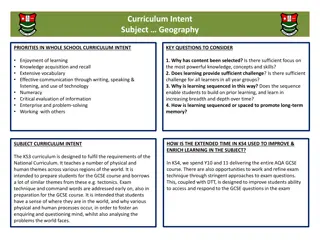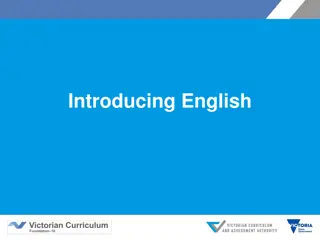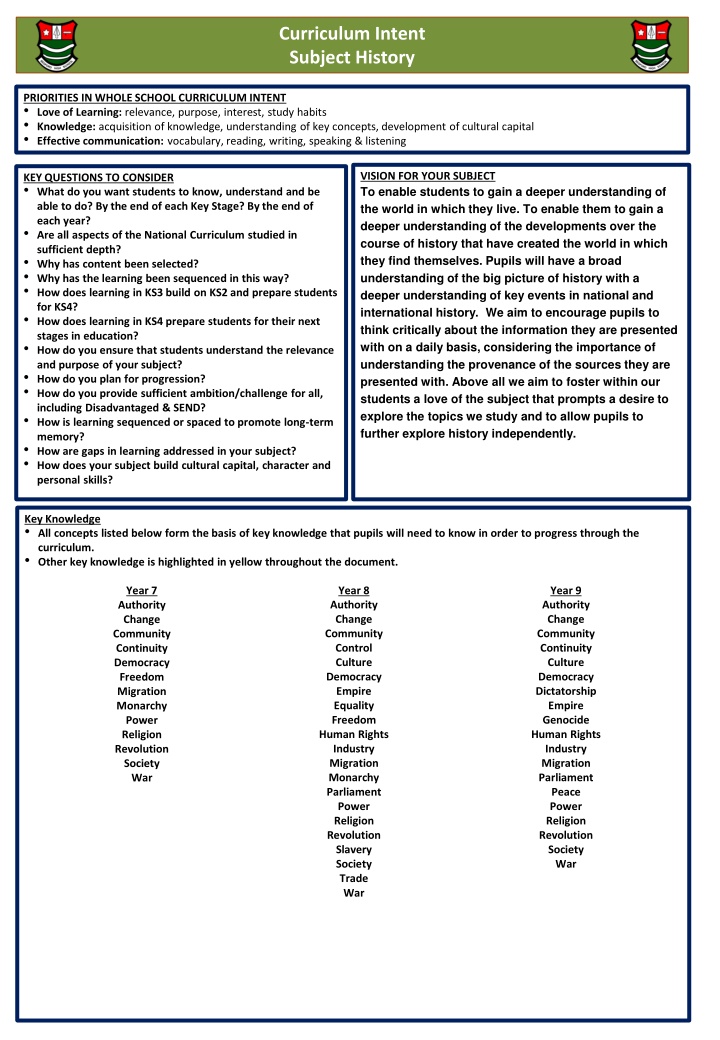
History: Key Concepts and Skills for Year 7 Students
Explore the foundational concepts and skills necessary for Year 7 History students, including timelines, sources, and the impact of migration on society. Build a strong historical foundation with this engaging unit.
Download Presentation

Please find below an Image/Link to download the presentation.
The content on the website is provided AS IS for your information and personal use only. It may not be sold, licensed, or shared on other websites without obtaining consent from the author. If you encounter any issues during the download, it is possible that the publisher has removed the file from their server.
You are allowed to download the files provided on this website for personal or commercial use, subject to the condition that they are used lawfully. All files are the property of their respective owners.
The content on the website is provided AS IS for your information and personal use only. It may not be sold, licensed, or shared on other websites without obtaining consent from the author.
E N D
Presentation Transcript
Curriculum Intent Subject History PRIORITIES IN WHOLE SCHOOL CURRICULUM INTENT Love of Learning: relevance, purpose, interest, study habits Knowledge: acquisition of knowledge, understanding of key concepts, development of cultural capital Effective communication: vocabulary, reading, writing, speaking & listening VISION FOR YOUR SUBJECT To enable students to gain a deeper understanding of the world in which they live. To enable them to gain a deeper understanding of the developments over the course of history that have created the world in which they find themselves. Pupils will have a broad understanding of the big picture of history with a deeper understanding of key events in national and international history. We aim to encourage pupils to think critically about the information they are presented with on a daily basis, considering the importance of understanding the provenance of the sources they are presented with. Above all we aim to foster within our students a love of the subject that prompts a desire to explore the topics we study and to allow pupils to further explore history independently. KEY QUESTIONS TO CONSIDER What do you want students to know, understand and be able to do? By the end of each Key Stage? By the end of each year? Are all aspects of the National Curriculum studied in sufficient depth? Why has content been selected? Why has the learning been sequenced in this way? How does learning in KS3 build on KS2 and prepare students for KS4? How does learning in KS4 prepare students for their next stages in education? How do you ensure that students understand the relevance and purpose of your subject? How do you plan for progression? How do you provide sufficient ambition/challenge for all, including Disadvantaged & SEND? How is learning sequenced or spaced to promote long-term memory? How are gaps in learning addressed in your subject? How does your subject build cultural capital, character and personal skills? Key Knowledge All concepts listed below form the basis of key knowledge that pupils will need to know in order to progress through the curriculum. Other key knowledge is highlighted in yellow throughout the document. Year 7 Authority Change Community Continuity Democracy Freedom Migration Monarchy Power Religion Revolution Society War Year 8 Authority Change Community Control Culture Democracy Empire Equality Freedom Human Rights Industry Migration Monarchy Parliament Power Religion Revolution Slavery Society Trade War Year 9 Authority Change Community Continuity Culture Democracy Dictatorship Empire Genocide Human Rights Industry Migration Parliament Peace Power Religion Revolution Society War
YEAR 7 SKILLS KNOWLEDGE CONCEPTS RATIONALE PERSONAL DEVELOPMENT SMCMP, PSHE, Careers Why has this learning been selected? Why has it been sequenced in this way? This units provides transferable skills. It shows students how to critically examine sources and recognise how different interpretations of events can exist. What is History? Units of time: Standard units of time. Use of centuries. BC and AD and their use Timelines: How to plot and read timelines. Types of sources: Primary and Secondary and the different types of source e.g. artefacts, written sources. We will introduce students to the concept of the study of History. We provide them with the basic skills and concepts to be able to talk about the building blocks of history (chronology and sources) so that as they progress through the course they can become disciplined historians. We use two case studies to allow pupils to start to understand the framing of historical enquiries and to exercise their developing historical vocabularies. Students can recall some facts, describe people, events and places in the past Students can understand that the past is divided into different periods. Students can list how things have changed and continued over a specific This unit will help pupils understand how migration has impacted the country. This will help pupils recognise the positive impact that migration can have on society and the advantages of a diverse society. time period. Migration to and from Britain before 1066 Migration Community Students can begin to give Migration: What it is? Who were the first settlers to England. Roman impact on Britain. Anglo-Saxon impact on Britain Viking settlement of Britain a few reasons or results Society e.g. list them. Change Students can describe what Continuity a source shows in response to a particular question. Students can identify some The Norman Conquest Succession crisis in 1066: Causes of the crisis and background of the participants. The Battle of Stamford Bridge: Reasons for the battle , events of the battle, and reasons for the Saxon victory. The Battle of Hastings: Reasons for the battle , events of the battle, and reasons for the Norman victory. Motte and Bailey Castles: Construction, purpose, and strengths and weaknesses. Stone Castles: Comparison to Motte and Bailey castles Feudal System: Purpose, roles within, and impact of the system. Domesday book: Reasons for its creation. Process of its creation. Value as a historical source We examine the Norman conquest as it is a defining moment of British History that pupils need to understand in order to situate all the historical developments that come afterwards. This unit also provides a framework for pupils to build on their knowledge of medieval England in both term 2 of year 7 and as part of the Medicine Through time course in year 10 ways that the past is Monarchy represented. T e r m 1 War Power Society Migration Community Authority
YEAR 7 KNOWLEDGE CONCEPTS SKILLS RATIONALE PERSONAL DEVELOPMENT SMCMP, PSHE, Careers Why has this learning been selected? Why has it been sequenced in this way? Study of the Magna Carta: encourages respect for democracy and support for participation in the democratic processes, including respect for the basis on which the law is made and applied in England. Life in Medieval England Village and town life: Features of, and Similarities and differences between the two. Religion: How did religion impact the lives of people in Norman England Trade: How did the economy function in Medieval England. What are the similarities and differences between Medieval economy and the economy today. Crime and punishment: What did Medieval people consider to be crimes? What did medieval people use as punishments. How was law enforced in Medieval England. In term two pupils will start to focus on key themes that they will look at during KS3, the lives of ordinary people and the role of Church and state in England's development. Students will chronologically, follow on from their work in term 1 in order to strengthen their chronological understanding. Community Students can describe accurately different Monarchy people, events and Change periods. Students may begin to make simple Continuity comparisons. Freedom Students can put events Looking into Medieval Crime and Punishment gets pupils to consider the role that the law plays in modern society. Society and people into chronological framework. Power Students can describe how These units also allow pupil to gain knowledge that will help them put their study of both Medicine in the Medieval period and Anglo-Saxon and Norman England into historical context. Authority things have changed and continued over a specific Religion time period. Students can describe the causes or consequences of an event. Students can use sources These units also allow pupils to begin to consider the differences between the experiences of ordinary people in the past and the experiences of people today. (quotes/descriptions) to answer questions about the past. Students can describe what a source Monarchy Development of the Monarchy and Church in England suggests as well as says. Power Students can describe Revolution different interpretations Theses units allow pupils to consider how different people and events are interpreted by historians and allows pupils to gain critical thinking skills. T e r m 2 Thomas Becket: What is the context of Thomas Becket's' murder? How has his death been interpreted. Why was his death a significant event? King John: Who was he? How accurate are historical interpretations? Magna Carta Black Death Peasants Revolt and begin to test Democracy hypothesis Freedom Society Power Authority Religion
YEAR 7 SKILLS KNOWLEDGE CONCEPTS RATIONALE PERSONAL DEVELOPMENT SMCMP, PSHE, Careers Why has this learning been selected? Why has it been sequenced in this way? Community Through study of the formation of the Church of England students are able to acquire a broad general knowledge of and respect for public institutions and services in England. These units have been chosen to allow pupils to gain both a chronological understanding of how life in England progressed after the Medieval period and also to continue the theme of the differing experiences of people of different social classes that is covered in term 2. Students can describe Life in Tudor England Class in Tudor England: What were the different social classes in Tudor England. How did the different classes live. Tudor Entertainment: What did the Tudors do for fun Crime and Punishment: How did the Tudors punish criminals. What crimes did the Tudors have. accurately different Monarchy people, events and Change periods. Students may begin to make simple Continuity comparisons. Freedom Looking at the issues around conflict between Catholics and Protestant frames discussions of religious tolerance in the Modern World. Students can put events Society and people into chronological framework. Power Students can describe how Authority things have changed and These units also include a thematic study of religion in England during the Tudor period. This will improve students abilities to focus in on one topic and look at development of one particular area over a period of time. continued over a specific Religion time period. Establishing the Tudor Monarchy Henry Vii: Who was he? How did he establish control of England following the war of the Roses. Henry VIII: Who was he? Was he an effective King? What were the key features of his reign How is Henry VIII shown on film Students can describe the causes or consequences of an event. Students can use sources (quotes/descriptions) to answer questions about the past. Students can These units also serve to provide context to the Renaissance unit studied as part of the GCSE syllabus so that students have a richer background knowledge of the period studied. describe what a source suggests as well as says. Students can describe different interpretations and begin to test T e r m 3 hypothesis How was Britain affected by the growth of Protestantism The reformation: How did Protestantism start in Europe? The King's Great Matter : How did Henry break with Rome? Edward VI: How did Edward change the church? Mary I: How accurate are historical interpretations of Mary? How did Mary change the Church? Elizabeth I: What was Elizabeth s Third Way? Mary Queen of Scots The Spanish Armada Who took the throne following Elizabeth s death. What was the Gunpowder plot?
YEAR 8 KNOWLEDGE CONCEPTS SKILLS RATIONALE PERSONAL DEVELOPMENT SMCMP, PSHE, Careers Why has this learning been selected? Why has it been sequenced in this way? Community This unit has been selected as it allows pupils to examine the balance of power between the monarchy and the people, a theme that is explored in year 8. It is sequenced here as it provides a direct chronological continuation from the work that pupils have studied in Year 7 and will act as a way of situating their learning before branching out to more diverse topics looking at the development of Britain as a world power. This unit has also been selected based on its importance as a step in establishing the balance of power in Britain in the modern day. Study of the English Civil War encourages respect for democracy and support for participation in the democratic processes, including respect for the basis on which the law is made and applied in England. The English Civil War Students are beginning to explain accurately The long and short term causes of the English Civil War. The armies of the English Civil war. The New Model army The events of the English CiviL War. The factors in the Parliamentarian victory. England under Cromwell The restoration. Monarchy different features, events Change and people of the past. Students may begin to Continuity make links between what Freedom happened and say good Society and bad points about Study of the British Empire helps pupils to understand the diverse experiences people have had around the world throughout History and Britain s positive and negative impacts on different parts of the world what happened Power Authority Students can put events and people into context Religion of a chronological framework Empire Britain and Empire Reasons for the British Empire. Case studies of the British Empire America India Australia Interpretations of the British Empire Migration Students can explain the reasons and Freedom This unit has been selected as it allows pupils to explore Britain s role in the wider world. It allows pupils to appreciate how Britain was able to become a world power and allow them to consider the impact, both positive and negative, of Britain s empire. This unit will help pupils understand why Britain has the position in the world that it has and how it is linked to the development of other countries.This unit is sequenced here as it provides essential context for what pupils will study in the remainder of year 8. It provides pupils with a broad understanding of Britain's role in the wider world before they look at the development of Britain at home. It has strong contextual and thematic links to the units that pupils will study during the rest of year 8. consequences of change Society and continuity across a specific time period. Authority Community Students can begin to Equality recognise that some events/people are more Culture significant. Power Term 1 and 2 Students can explain the causes or consequences of an event. Students may suggest links between them. Students am beginning to evaluate sources. Students can compare and combine the evidence from different sources. Students can suggest some reasons why interpretations differ.
YEAR 8 KNOWLEDGE CONCEPTS SKILLS RATIONALE PERSONAL DEVELOPMENT SMCMP, PSHE, Careers Why has this learning been selected? Why has it been sequenced in this way? Society The teaching of pre-slavery African cultures promotes further tolerance and harmony between different cultural traditions by enabling students to acquire an appreciation of and respect for their own and other cultures The Transatlantic Slave Trade Slavery and freedom: What do the terms mean? What is the historical context of slavery? Africa before Slavery: How does Africa in the 1500 and 1600 s match the European idea of Africa? Triangular Trade Life on the Middle passage Auctions Plantation life Resistance This unit provides pupils with a thematic look at the experience of Black Africans taken to America and their descendants. This study spans a large frame of time from the 1500 s to the 1880 s and provides a opportunity for pupils to see how the experiences of Black people in the Americas changed over a period of time and allows them to explore the diverse nature of historical experiences. It is sequenced here as it allows pupils to further understand one of the main issues with the British Empire studied in the previous units and provides important contextual background to the topics covered in the next 3 units. Students are beginning to explain accurately Culture different features, events Community and people of the past. Students may begin to Freedom make links between what Slavery happened and say good Power and bad points about what happened Empire Equality Students can put events and people into context Control of a chronological framework Power Students can explain the reasons and Empire consequences of change Trade This unit has been selected as it is crucial to understanding the development of Britain as a economic superpower. Understanding the industrial revolution will allow pupils to directly appreciate the reasons for, and process of Britain s development into an industrial nation and the impact that this had on the landscape of Britain today. This unit is sequenced here as it brings together concepts and themes that have been covered throughout year 8 and provides the picture of Britain at home that will act as a counterpoint to the study of Britain as a world power. The Industrial Revolution Britain in 1750: What was Britain like in 1750? Was Britain Great in 1750? The population boom: What led to the population boom of the 1800 s? What impact did this have on Britain? Domestic to factory system: How did inventions lead to a change in British Industry? What was the role of key individuals in its growth? Child labour: How were children used as a labour force during the industrial revolution? Definitions of the Industrial revolution: what did it actually involve? Can we call it a revolution? and continuity across a specific time period. Migration Industry Students can begin to Change recognise that some events/people are more Revolution significant. Term 2 and 3 Society Students can explain the Equality causes or consequences of an event. Students may suggest links between them. Students am beginning to evaluate sources. Students can compare and combine the evidence from different sources. Students can suggest some reasons why interpretations differ.
YEAR 8 KNOWLEDGE CONCEPTS SKILLS RATIONALE PERSONAL DEVELOPMENT SMCMP, PSHE, Careers Why has this learning been selected? Why has it been sequenced in this way? The Age of Revolution Exploration of revolutions The American Revolution The French Revolution The Hatian Revolution The situation in Britain. Why Britain didn t experience a political revolution in this period. Democracy This unit has been chosen to allow us to contrast Britain with other countries in the same period. This will allow pupils to gain an understanding of how countries can develop differently and the diverse nature of historical experience. This unit also allows us to explore further how Britain dealt with the upheaval experienced by the industrial revolution. Students can explain accurately and in detail Revolution features, events, and Freedom people. Students make links between what Change happened and evaluate Society any actions taken Power Students can explain the extent of change and Slavery continuity across a specific time period. The Fight for Equality: Gender, Race and Civil Rights. This unit provides pupils with an in depth examination of how different groups have fought for equality. It demonstrates to students the impact that people can have on the laws of a country through sustained action and allows students to explore the different methods groups can use to bring about changes to the law. The unit also allows pupils to gain an understanding of how people experiences throughout history can be impacted by factors such as their race and gender. This unit has been included at this point in the course as it allows pupils to reflect on what they have learned throughout year 8. This unit examines how at different points in history steps have been taken to make societies more equal. This unit encourages students to consider how equal people are in society today and the steps that need to be taken to increase equality. Slavery Students can explore criteria/respond to The Suffragette movement. The Civil Rights Movement. Freedom prompts for making a Society judgement about the most significant events, Human Rights people and changes. Parliament Students can start to Authority explain the links Change between different causes or consequences of an T e r m 3 event. Students can evaluate sources. Students can explain the strengths and weaknesses of a source. Students am beginning to explain how and why interpretations differ.
YEAR 9 KNOWLEDGE CONCEPTS SKILLS RATIONALE PERSONAL DEVELOPMENT SMCMP, PSHE, Careers Why has this learning been selected? Why has it been sequenced in this way? War This has been chosen as it follows chronologically from the main topics studied in year 8 and acts as a framing device for the overall theme in year 9, namely the tumultuous events on the 20th Century. The study of world war one allows pupils to explore the impact of the war on both an international scale and also to understand the diverse nature of experiences that soldiers would have had during world war one. This unit also allows pupils to see how events are not a by-product of one line of causation, that there are many interconnected factors that can cause an event to happen. This unit links to students moral development as it helps students gain the ability to recognise the difference between right and wrong and to readily apply this understanding in their own lives It also instils an interest in investigating and offering reasoned views about moral and ethical issues and ability to understand and appreciate the viewpoints of others on these issues. World War One Europe in 1900: What was the background to WW1 Who were the key players? Long term causes of WW1: Militarism, Imperialism, Alliances, Nationalism The assassination of Franz Ferdinand: how did it lead to war? The escalation of conflict: How did Britain enter WW1? How did trench warfare happen? Trench Warfare: How was the war fought on the Western Front? What were the common experiences of soldiers? Recruitment and conscription: How did the government encourage people to fight in WW1? Shell shock The role of Generals The Armistice The Treaty of Versailles Students can explain accurately and in detail Empire features, events, and Change people. Students make links between what Continuity happened and evaluate Power any actions taken Peace Students can explain the extent of change and continuity across a specific time period. Students can explore criteria/respond to prompts for making a judgement about the most significant events, people and changes. Students can start to explain the links between different causes or T e r m 1 consequences of an event. Students can evaluate sources. Students can explain the strengths and weaknesses of a source. Students am beginning to explain how and why interpretations differ.
YEAR 9 KNOWLEDGE CONCEPTS SKILLS RATIONALE PERSONAL DEVELOPMENT SMCMP, PSHE, Careers Why has this learning been selected? Why has it been sequenced in this way? Democracy Dictatorship Change Continuity Authority Empire Migration Peace War This unit has been added to allow pupils to gain an appreciation of how Europe was able to go from one World War to another within a span of around 20 years. This unit will allow pupils to bridge their understanding of how Europe recovered from the First World War and then descended into the second. Europe and America between the Wars Students can analyse different features of The impact of WW1 on Europe. The League of Nations The growth of America during the 20 s The Wall Street Crash and the Great Depression The depression in the UK The policy of Appeasement. the past and evaluate fully. Students can explain the speed of change and continuity across a specific time period. This unit has been included here to allow pupils to apply what they have learned in year 8 and the first unit of year 9 to their local area. Pupils will get the opportunity to understand the role of their local area in the key events that they have looked at. This will help students gain a deeper understanding of the impact of these events on their world. Students can begin to explain how the Leigh from the Industrial Revolution to WW1. Industry Change Continuity War Culture Society significance of events, people and changes Leigh s role in the industrial revolution Leigh s development during the industrial revolution The impact of WW1 on Leigh are varied according to differing perspectives. Students can fully analyse the links e.g. may explain short and This unit has been included as a way of allowing pupils to gain a wider understanding of the different ways a country can be run. This unit is important as it allows pupils to gain an understanding of the relative advantages Britain has as a democracy and will act as a way of highlighting to pupils the importance and strengths of the democratic process. long term causes fully. Democracy and Dictatorship Students can explain Political Systems Democracy elections, history, examples Dictatorships examples, how they work, why might people initially support dictatorships (economy). Left and right, voting systems Communism vs Fascism theme, understanding the differences and similarities USSR Mussolini s Italy Hilter s Germany why a source is or isn't T e r m 2 useful or reliable with a full explanation. Democracy Dictatorship War Human Rights Community Society Authority Parliament Revolution Students can critically consider origin, nature and purpose. Students can fully explain how and why interpretations differ.
YEAR 9 KNOWLEDGE CONCEPTS SKILLS RATIONALE PERSONAL DEVELOPMENT SMCMP, PSHE, Careers Why has this learning been selected? Why has it been sequenced in this way? This topic is being studied for two distinct reasons. Firstly because of the enormous impact it has had on the shaping of the modern world. Pupils will get the opportunity to explore an event that has had an enormous impact on shaping the world in which they live. Secondly it provides context for the GCSE unit on Weimar and Nazi Germany by allowing pupils to gain prior knowledge about the imapact of the Nazi regieme on Europe. World War Two Dunkirk The Home Front The Battle of Britain The role of Churchill D Day The end of the War Students can analyse different features of the past and evaluate Genocide Society Power Culture Authority Dictatorship Migration Community Religion These units link to students moral development as it helps students gain the ability to recognise the difference between right and wrong and to readily apply this understanding in their own lives It also instils an interest in investigating and offering reasoned views about moral and ethical issues. fully. Students can explain The Holocaust and Genocide in the Modern World the speed of change and continuity across What is Genocide?. Holocaust 1 Germany, the anti-Semitism, early attacks and laws Holocaust 2 Concentration Camps, ghettos, final solution, other groups also persecuted Holocaust 3 Individuals helping persecuted groups UN and Human Rights Why and when it was set up, context of post WWII atrocities, Dec of Human rights Case Studies: Rwanda 1994 Bosnia 1995 and Kosovo 1999 Darfur 00s a specific time period. Students can begin to explain how the significance of events, people and changes This unit has been positioned as the last unit of KS3 as it allows pupils to have gained the emotional capacity to deal with the most difficult topic which we will teach them. This unit has been selected as it allows pupils to understand some of the most horrific events perpetrated during the 20th Century. This unit provides one of the most effective subjects for examining moral issues within history. A structured enquiry into the Holocaust and other modern examples of genocide yields critical lessons for an investigation into human behavior. It is vital that students understand how the event happened and the steps that led to it in order to ensure it does not happen again. are varied according to differing perspectives. Students can fully analyse the links e.g. may explain short and long term causes fully. T e r m 3 Students can explain why a source is or isn't useful or reliable with a full explanation. Students can critically consider origin, nature and purpose. Students can fully explain how and why interpretations differ.
YEAR 10 CONCEPTS KNOWLEDGE SKILLS RATIONALE Why has this learning been selected? Why has it been sequenced in this way? This unit covers the depth study requirement of the Edexcel GCSE. We selected the Medicine unit as it accessible to a wide range of students as most have had experience with some form of medical care as opposed to warfare or crime and punishment, which they may not have been exposed to. There was also a decision to choose this unit as it provided breadth of knowledge to students as they were more likely to have come across historical examples of crime, punishment, and warfare as part of their studies of renaissance and medieval society. It was also believed that, as it links to developments in diverse fields such as religion, science and technology, government and law that it provided pupils with a broad overview of time periods in order to strengthen their broad historical understanding. Causation Treatment Prevention Change Continuity Science and Technology Government Individuals Industry War Progress Themes: Pupils will gain an understanding of the way in which medical knowledge has progressed throughout history. Significance: Students will be able to judge the relative significance of topics within a historical framework. Analysis: Students will be able to explore the factors that contribute to different events and developments in history. Change and continuity: Students will be able to see the similarities and differences between different historical stages as part of a narrative. Medieval England Supernatural and religious explanations of the cause of disease. Rational explanations: the Theory of the Four Humours and the miasma theory; the continuing influence in England of Hippocrates and Galen Approaches to prevention and treatment and their connection with ideas about disease and illness: religious actions, bloodletting and purging, purifying the air, and the use of remedies. New and traditional approaches to hospital care in the thirteenth century. The role of the physician, apothecary and barber surgeon in treatment and care provided within the community and in hospitals, c1250 1500. Dealing with the Black Death, 1348 49; approaches to treatment and attempts to prevent its spread. Renaissance England Continuity and change in explanations of the cause of disease and illness. A scientific approach, including the work of Thomas Sydenham in improving diagnosis. The influence of the printing press and the work of the Royal Society on the transmission of ideas. Continuity in approaches to prevention, treatment and care in the community and in hospitals. Change in care and treatment: improvements in medical training and the influence in England of the work of Vesalius. Key individual: William Harvey and the discovery of the circulation of the blood. Dealing with the Great Plague in London, 1665: approaches to treatment and attempts to prevent its spread. Industrial Britain Continuity and change in explanations of the cause of disease and illness. The influence in Britain of Pasteur s Germ Theory and Koch s work on microbes. The extent of change in care and treatment: improvements in hospital care and the influence of Nightingale. The impact of anaesthetics and antiseptics on surgery. Industrial Britain New approaches to prevention: the development and use of vaccinations and the Public Health Act 1875. Key individual: Jenner and the development of vaccination. Fighting Cholera in London, 1854; attempts to prevent its spread; the significance of Snow and the Broad Street pump. Modern Britain Advances in understanding the causes of illness and disease: the influence of genetic and lifestyle factors on health. Improvements in diagnosis: the impact of the availability of blood tests, scans and monitors. The extent of change in care and treatment. The impact of the NHS and science and technology: improved access to care; advances in medicines, including magic bullets and antibiotics; high tech medical and surgical treatment in hospitals. New approaches to prevention: mass vaccinations and government lifestyle campaigns. Key individuals: Fleming, Florey and Chain s development of penicillin. The fight against lung cancer in the twenty-first century: the use of science and technology in diagnosis and treatment; government action. T e r m 1 Medicine on the Western Front 1. Trench Layout and Battles: Practical details relating to how WW1 was fought with a focus on how these elements would impact on the treatment of patients 2. Injuries and Illnesses e.g. trench foot, shell shock, shrapnel wounds
YEAR 10 KNOWLEDGE CONCEPTS SKILLS RATIONALE PERSONAL DEVELOPMENT SMCMP, PSHE, Careers Why has this learning been selected? Why has it been sequenced in this way? Causation Treatment Prevention Change Continuity Science and Technology Government Individuals Industry War Progress Medicine on the Western Front 3. Treatment of Soldiers: The chain of evacuation and key groups involved in treatment of soldiers and the methods they would use. 4. Key Developments: Advancements in fields such as blood transfusions, x-rays, and facial reconstruction. Anglo Saxon and Norman England This unit was chosen as a British depth study at GCSE as it allows us to build on pupils prior knowledge on an event which was crucial in determining the future course of England. This unit serves as a detailed study of a key turning point in British History and allows pupils n opportunity to further explore the importance of the period and the changes it brought to Britain. Chronology: Students will gain an understanding of the chronological progress of history in the period studied. Significance: Students will be able to judge the relative significance of topics within a historical framework. Analysis: Students will be able to explore the factors that contribute to different events and developments in history. Change and continuity: Students will be able to see the similarities and differences between different historical stages as part of a narrative. Diversity: Pupils will gain an appreciation for the diversity of experiences within a historical setting. Monarchy and government. The power of the English monarchy. Earldoms, local government and the legal system. The economy and social system. Towns and villages. The influence of the Church. The house of Godwin. Harold Godwinson s succession as Earl of Wessex. The power of the Godwins. Harold Godwinson s embassy to Normandy. The rising against Tostig and his exile. The death of Edward the Confessor. Change Continuity Society Power War Peace Monarchy Authority Religion Migration Culture Trade The Norman conquest The motives and claims of William of Normandy, Harald Hardrada and Edgar. The Witan and the coronation and reign of Harold Godwinson. Reasons for, and significance of, the outcome of the battles of Gate Fulford and Stamford Bridge. The Battle of Hastings. Reasons for William s victory, including the leadership skills of Harold and William, Norman and English troops and tactics. T e r m 2 Securing the Kingdom The submission of the earls,1066. Rewarding followers and establishing control on the borderlands through the use of earls. The Marcher earldoms. Reasons for the building of castles; their key features and importance. The revolt of Earls Edwin and Morcar in 1068. Edgar the Aethling and the rebellions in the North, 1069. Hereward the Wake and rebellion at Ely, 1070 71. The reasons for and features of Harrying of the North, 1069 70. Its immediate and long term impact, 1069 87. Changes in landownership from Anglo-Saxon to Norman, 1066 87.
YEAR 10 KNOWLEDGE CONCEPTS SKILLS RATIONALE Why has this learning been selected? Why has it been sequenced in this way? Securing the kingdom How William I maintained royal power Reasons for and features of the Revolt of the Earls. The defeat of the revolt and its effects. Norman England The feudal hierarchy. The role and importance of tenants-in chief and knights. The nature of feudalism (landholding, homage, knight service, labourservice); forfeiture. The Church in England: its role in society and relationship to government, including the roles of Stigand and Lanfranc. The Normanisation and reform of the Church in the reign of William I. The extent of change to Anglo-Saxon society and economy. Changes to government after the Conquest. Centralised power and the limited use of earls under William I. The role of regents. The office of sheriff and the demesne. Introduction and significance of the forest . Domesday Book and its significance for Norman government and finance. The culture and language of the Norman aristocracy. Character and personality of William I and his relations with Robert. Robert and revolt in Normandy, 1077 80. William s death and the disputed succession. William Rufus and the defeat of Robert and Odo. The American West Early Settlement c1835-1862 Social and tribal structures, ways of life and means of survival on the Plains. Beliefs about land and nature and attitudes to war and property. US government policy: support for US westward expansion and the significance of the Permanent Indian Frontier. The Indian Appropriations Act 1851. The factors encouraging immigration, including economic conditions, the Oregon Trail from 1836, the concept of Manifest Destiny, and the Gold Rush of 1849. The process and problems of migration, including the experiences of the Donner Party and the Mormon migration, 1846 47. The development and problems of white settlement farming. Reasons for tension between settlers and Plains Indians. The significance of the Fort Laramie Treaty 1851. The problems of lawlessness in early towns and settlements. Attempts by government and local communities to tackle lawlessness. This option has been selected as it allows pupils to explore history as a tapestry of different stories. Students will explore three different strands of the course, the Plains Indians, the settlers, and the cattle industry and will be able to see how different historical stories can interweave to produce a single narrative. This unit was also chosen in order to demonstrate to pupils that behind commonly accepted cultural ideas (cowboys and Indians) there is a deeper story that must be explored. Chronology: Students will gain an understanding of the chronological progress of history in the period studied. Significance: Students will be able to judge the relative significance of topics within a historical framework. Analysis: Students will be able to explore the factors that contribute to different events and developments in history. Change and continuity: Students will be able to see the similarities and differences between different historical stages as part of a narrative. Diversity: Pupils will gain an appreciation for the diversity of experiences within a historical setting. T e r m 3 Development of the Plains c1862-1867 The significance of the Civil War and post war reconstruction, including the impact of the Homestead Act 1862, the Pacific Railroad Act 1862,and the completion of the First Transcontinental Railroad, 1869. Attempts at solutions to problems faced by homesteaders: the use of new methods and new technology; the impact of the Timber Culture Act 1873 and of the spread of the railroad network. Continued problems of law and order in settlements, and attempted solutions,including the roles of law officers and increases in federal government influence. The cattle industry and factors in its growth,including the roles of Iliff,McCoy and Goodnight,the significance of Abilene And the use of the railroad network. The impact of changes in ranching on the work of the cowboy. Rivalry between ranchers and homesteaders. The impact of railroads,the cattle industry and gold prospecting on the Plains Indians. The impact of US government policy towards the Plains Indians, including the continued use of reservations. President Grant s Peace Policy , 1868. Conflict with the Plains Indians: Little Crow s War(1862) and the Sand Creek Massacre (1864),the significance of Red Cloud's War (1866 68)and the Fort Laramie Treaty (1868) Conflicts and Conquest c1876-1895 Changes in farming: the impact of new technology and new farming methods. Changes in the cattle industry, including the impact of the winter of 1886 87. The significance of changes in the nature of ranching: the end of the open range. Continued growth of settlement: the Exoduster Movement and Kansas(1879), the Oklahoma Land Rush of 1893 Consequence: Students will be able to see how historical developments can have diverse results. Change Continuity Empire Human Rights Migration War Farming Equality Religion Community Expansion
YEAR 11 KNOWLEDGE CONCEPTS SKILLS RATIONALE Why has this learning been selected? Why has it been sequenced in this way? This unit has been selected in order to allow pupils to gain a deeper appreciation of the path the Holocaust, an event that they will have studied in year 8. It is also a crucial element of study for understanding the role of democracy in the modern world. It serves as a significant case study of the critical issues of our own time. Many of the questions asked about the Weimar Republic are relevant to problems that individuals and societies face in the twenty-first century and allow pupils to reflect on the world around them. Chronology: Students will gain an understanding of the chronological progress of history in the period studied. Significance: Students will be able to judge the relative significance of topics within a historical framework. Analysis: Students will be able to explore the factors that contribute to different events and developments in history. Change and continuity: Students will be able to see the similarities and differences between different historical stages as part of a narrative. Diversity: Pupils will gain an appreciation for the diversity of experiences within a historical setting. Consequence: Students will be able to see how historical developments can have diverse results. Source utility: Pupils will be able to explore the utility of sources. Interpretation: Pupils can explore how different historians have interpreted events and can explain the reasons behind differing interpretations. Inference: Pupils can draw inferences from historical sources. Extent of solutions to problems of law and order: sheriffs and marshals. The Significance of Billy the Kid, OK Corral (1881), Wyatt Earp. The range wars, including the Johnson County War Of 1892. Conflict with the Plains Indians: the Battle of the Little Bighorn, 1876 and its impact; the Wounded Knee Massacre, 1890. The hunting and extermination of the buffalo. The Plains Indians life on the reservations. The significance of changing government attitudes to the Plains Indians, including the Dawes Act 1887 and the closure of the Indian Frontier. Weimar and Nazi Germany The Weimar Republic 1918-1929 End of WW1: How did WW1 end? What impact did this have on Germany? How was the Weimar Republic formed? Problems of the Weimar Republic : Uprisings against the government, constitutional weaknesses, the Treaty of Versailles. Hyperinflation in 1923: Causes, events of, and impacts of the Hyperinflation crisis. Stresemann Era: Stresemann's improvements to Germany and the concept of a golden age. Wall Street Crash: Causes, events of, and impact of the depression in Germany following the Wall Street Crash. Democracy Dictatorship War Human Rights Community Society Authority Parliament Revolution Hitler s rise to power 1919-33 1. Who was Adolf Hitler 2.How did the Nazi party start to grow? 3. The Munich Putsch: Causes, events and outcomes. 4.The Lean Years: Reasons for and impact of the Lean years on the Nazis 5. How Hitler became Chancellor Nazi control and dictatorship 1933-39 1. How Hitler became Fuhrer 2.Use of Terror and Propaganda 3. Control of the Church in Nazi Germany 4. Cultural Change under the Nazis 5. Opposition: reasons for, and methods of opposition to the Nazis. as means of control in Germany T e r m 1
YEAR 11 KNOWLEDGE CONCEPTS SKILLS RATIONALE PERSONAL DEVELOPMENT SMCMP, PSHE, Careers Why has this learning been selected? Why has it been sequenced in this way? This unit has been selected in order to allow pupils to gain a deeper appreciation of the path the Holocaust, an event that they will have studied in year 8. It is also a crucial element of study for understanding the role of democracy in the modern world. It serves as a significant case study of the critical issues of our own time. Many of the questions asked about the Weimar Republic are relevant to problems that individuals and societies face in the twenty-first century and allow pupils to reflect on the world around them. Chronology: Students will gain an understanding of the chronological progress of history in the period studied. Significance: Students will be able to judge the relative significance of topics within a historical framework. Analysis: Students will be able to explore the factors that contribute to different events and developments in history. Change and continuity: Students will be able to see the similarities and differences between different historical stages as part of a narrative. Diversity: Pupils will gain an appreciation for the diversity of experiences within a historical setting. Consequence: Students will be able to see how historical developments can have diverse results. Source utility: Pupils will be able to explore the utility of sources. Interpretation: Pupils can explore how different historians have interpreted events and can explain the reasons behind differing interpretations. Inference: Pupils can draw inferences from historical sources. Life in Nazi Germany 1933-1939 1. Women and the family: Nazi policies and ideology 2. Youth: Nazi policies and ideology 3. Education: Nazi policies and ideology 4. Nazi policies on employment. 5. Workers: Policies and Ideology affecting workers 6. Persecution of minorities: Nazi and ideology and policies towards Jews and other persecuted groups. Key elements of the course will be revisited during this term in order to encode key knowledge deeper into students long term memory. Students will examine the links between the different GCSE units taught in order to find patterns and similarities in order to strengthen their revision. Students will complete activities designed to promote deeper questions about the topics they have studied. T e r m 2
YEAR 11 KNOWLEDGE CONCEPTS SKILLS RATIONALE PERSONAL DEVELOPMENT SMCMP, PSHE, Careers Why has this learning been selected? Why has it been sequenced in this way? Key elements of the course will be revisited during this term in order to encode key knowledge deeper into students long term memory. Rich tasks are used to ensure that this time is used to deepen pupils contextual understanding of the key elements of the history curriculum rather than just revisiting content. This time is used to ensure that pupils can situate the knowledge they have in the bigger picture of History, using this knowledge to deepen their understanding. Pupils will review the skills they have practiced throughout their GCSE in order to cement their learning. Students will examine the links between the different GCSE units taught in order to find patterns and similarities in order to strengthen their revision. Pupils will engage with good revision techniques in order to strengthen their factual knowledge Students will complete activities designed to promote deeper questions about the topics they have studied. T e r m 3

